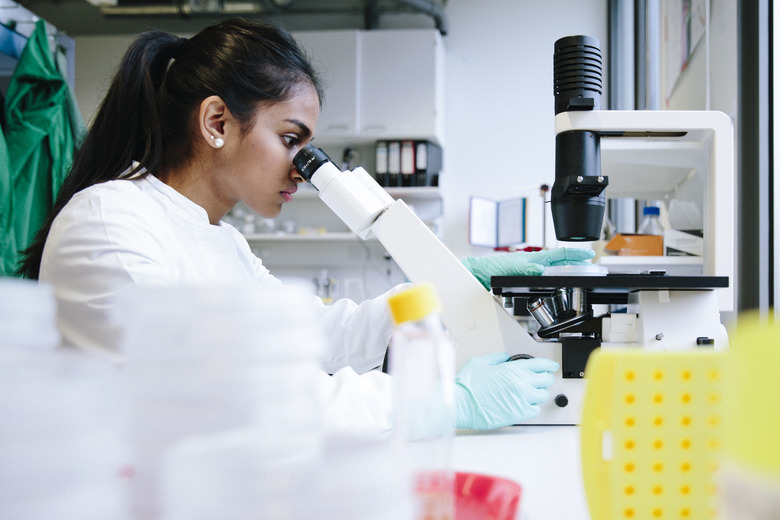Differences Between Protozoa & Protists
Protists are are one of the six kingdoms of life. All protists are eukaryotic — meaning they have a cell nucleus that stores their DNA — single-celled organisms. Thus they are the evolutionary bridge between bacteria and multi-celled organisms. Protists are often considered animal-like or plant-like because they behave similarly to multicellular organisms. Protozoa is another name for animal-like protists.
General Description
General Description
Like all protists, protozoa are single-celled organisms with a cell nucleus. Some have more than one nucleus. Protozoa are heterotrophs, which means they can not make their own food, but instead must ingest other organisms for energy. Most reproduce asexually through mitosis, which involves the splitting of their cell into two identical copies. Some reproduce through meiosis, which is sexual reproduction. Seven phyla — subdivisions of a kingdom — of protists are protozoa.
Mobility
Mobility
Many protozoa have a special form of locomotion that is not found in other types of protists because they need to chase down their food source. A flagellate is a protozoa that has an appendage like a tail that they whip around for movement. Ciliates use cilia — similar to hair follicles — to propel themselves. Psuedopods move themselves by stretching their entire membrane across a space, sometimes engulfing another organism in the process.
Diseases
Diseases
Some protozoa are parasites, which means that they attach themselves to another organism and feed on nutrients within that organism. Protozoa often manifest as a disease when they do this to a human being. Protozoa are not airborne, but are instead commonly ingested through dirty water. Examples of protozoa that cause disease include Giardia lamblia (which causes intestinal disease) and four species of Plasmodium, which cause malaria.
Other Protists
Other Protists
Some protozoa are classified as fungus-like, in that they live directly over a water source and live off of water soluble nutrients. A common example of a fungus-like protozoa is the slime mold. Any protist that has the ability to make its own food through photosynthesis is not classified as a protozoa. The most common type of non-protozoa protist is algae. Algae is found in huge quantities in the ocean and it is responsible for producing a large amount of the world's oxygen.
Cite This Article
MLA
Lichtenstein, Drew. "Differences Between Protozoa & Protists" sciencing.com, https://www.sciencing.com/differences-between-protozoa-protists-8472038/. 23 May 2011.
APA
Lichtenstein, Drew. (2011, May 23). Differences Between Protozoa & Protists. sciencing.com. Retrieved from https://www.sciencing.com/differences-between-protozoa-protists-8472038/
Chicago
Lichtenstein, Drew. Differences Between Protozoa & Protists last modified March 24, 2022. https://www.sciencing.com/differences-between-protozoa-protists-8472038/
